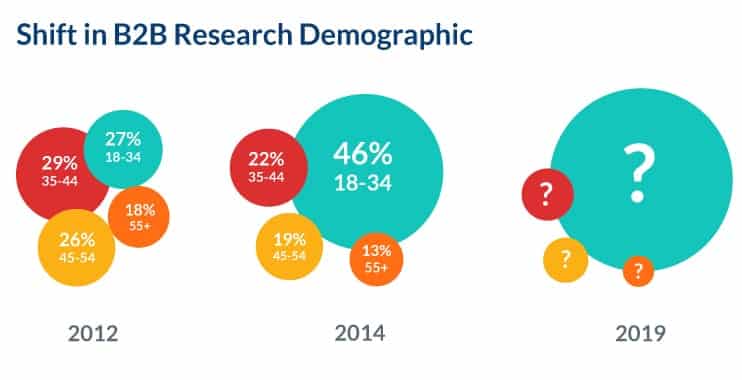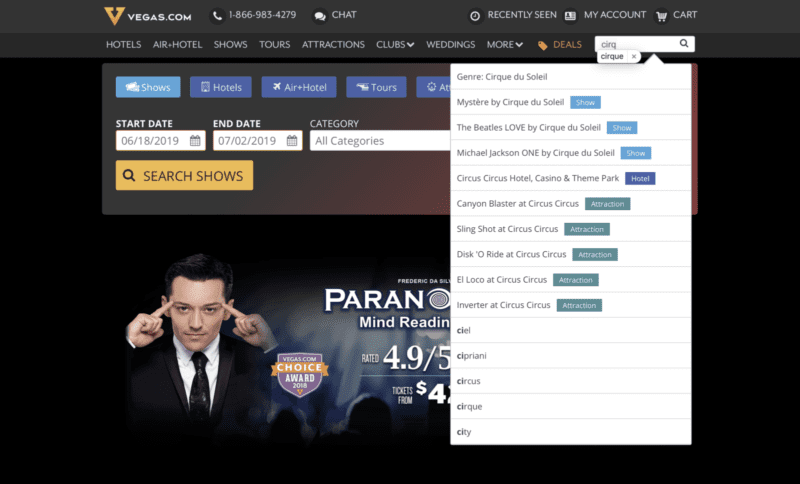Key to Improving Loyalty and Conversions in B2B
Suppose a B2B buyer is looking for a vendor to reliably restock chicken for their chain of grocery stores: They start their search by typing “chicken breast” into a potential supplier’s website and discover 1,300 related products. After a lot of scrolling, they finally find the brand and quantities needed, only to realize they’re not available under their buyer agreement. They need to call for more information. No sale for now.
Imagine another buyer who’s looking for industrial pipe for a large stadium project. They start their search with the specific heat standard needed for the pipe No result. Then they search for the brand name of the pipe. Still no result. They then search for just “pipe” and sift through pages of search results. Maybe there’s a sale there, but maybe not.
Product-finding experiences like this can make or break a transaction. They also determine whether someone will ever buy from you again. With customer acquisition costs rising, any business selling online can’t afford to attract buyers for a single transaction and lose them because of a poor on-site experience. It’s not about just losing that one sale. It’s about losing all the repeat transactions that would have come after.
Loyalty Effect
Loyalty and customer retention are the biggest drivers of digital commerce success, and in most industries, the most overlooked. Loyalty from just 5 percent of your customers could yield 25 percent and 100 percent increased average profit. This is known as the Loyalty Effect. In B2B, loyalty is primarily driven by how easy it is for customers to transact with you. In fact, 77 percent of buyers will pay more for a better purchasing experience (Forrester, 2016). But what makes a B2B transaction “easy”?
Understanding the B2B Buyer
We have seen first hand how B2C ecommerce is changing the way B2B buyers expect to purchase online. Yet, there are fundamental differences between B2B and B2C consumers. The key differences are in their purchase intent and the complexity of their journey.
First, B2B buyers are shopping as part of their jobs. They’re being paid to transact with you, and they’re also not typically spending their own money. This can impact the time, effort, budget and even research that will occur prior to purchase.
Second, the number of people involved in a purchase can be more complex than just one person. There can be as many as five people involved in a B2B ecommerce purchase. Product specialists, purchasing/buyers, finance teams and line of business decision-makers may all be looking to self-educate or contribute to a single purchase.
It’s important to note that almost half of the people involved are millennials, according to a Google study in 2014. (We can only assume the numbers are bigger) B2B buyers are younger and online looking for easy and immediate transactions. They grew up with better software in their personal lives and expect the same at work.

Third, their motivations are different. Meeting business requirements and pricing are just scratching the surface when it comes to understanding the person purchasing. Emotional motivations like reduced anxiety, reputational assurance, and hope, play a large role, according to Harvard Business Review.
Understanding the connection between business and emotional priorities is critical to boosting buyer loyalty.
Tots, Taters, and Potato Barrels: Enhanced Search Functionality
Whether our clients are selling wholesale groceries or industrial materials, they typically have two things in common: Highly specialized inventories and large, complex catalogs.
It wasn’t until our work with Sysco Foods that I realized there are more than 15 search terms for what we call “tater tots” in regular conversation. The brand name, location of the search, buyer agreements, and product content quality all play a role in how a buyer might find THEIR tater tot!

This creates significant product discovery challenges for buyers who must quickly find the product they’re looking for within a complex catalog with many comparable product options and variations. Not to mention that most buyers expect to see their specific customer pricing too…
62 percent of B2B buyers agree that enhanced search is “increasingly essential” to completing their online shopping objectives according to NN/g. But there’s a priority gap: Only 42 percent of B2B sellers have earmarked search as a top technical priority.
Small, incremental improvements to site search can have a huge impact on buyer loyalty and average order values. For example, type-ahead (also known as autocomplete) allows site visitors to progressively search and filter for products using a search box.

At RealDecoy, our experience tells us that at least 25 percent of site visitors click on a type-ahead search suggestion. This can increase average order value by up to 3 percent and order volumes by up to 5 percent.
A good example of this is our work with a low-cost imported goods seller with a huge product catalog: RealDecoy provided relevancy tuning to improve the quality of search results on their site and to enhance the overall product discovery experience. This project was a $25K investment that yielded a $1.3M return in the first 6 months.
Include Entire Product Catalog
![]()
Enhanced search functionality is only as good as the product content available. But many B2B sellers struggle to offer a complete catalog online even though 98 percent of B2B buyers will start their purchase research online (Mckinsey, 2017)
An online product catalog is a cornerstone for B2B sellers. Creating an immersive, information-rich experience builds interest among B2B buyers. This is key to convert potential customers into loyal shoppers.
Today’s online shoppers simply expect to find all the information they want for products on a company’s website, regardless of whether those products are available online. In a 2016 Forrester study, 71 percent of customers said they expect to view inventory online. But as many as 58 percent of buyers need offline support from a company’s sales reps because of lack of relevant information online (ecommerce360, 2019).
A complete online catalog that includes pricing and other details on all products can also serve as an inventory management system, as well as a data analytics tool to obtain deeper insights into shopping patterns. You can use this intelligence to better understand your buyers.
Personalization Works for B2B
Customization delivers what site visitors ask for. Personalization takes it to the next level and continues to drive conversions through contextualized product content recommendations.
Even companies doing a lot of things right – offering search relevancy, seasonal promotions, boosting and burying results – still aren’t really doing personalization. Because they’re not going deep enough into anticipating buyer needs.
Personalization in B2B has one major advantage over B2C: Users expect to login. This unlocks huge opportunities to leverage buyer behavior and improve personalization. Custom catalogs, contract and volume pricing, quick order forms, personalized promotions, cross-sell and up-sell and segmentation by role. These are all opportunities to make the logged-in experience richer than any B2C experience could be. (BigCommerce, Justin King)
Personalization can increase site search usage by up to 27 percent. This can boost conversion rates by up to 25 percent and triple revenue per search (Multi-Channel Merchant, 2017). It’s the best means of meeting the customer’s needs more effectively and efficiently and it makes interactions faster and easier. And that’s how you grow greater customer loyalty and increase the likelihood of repeat orders.
The Path of Least Resistance
Through the years, RealDecoy has helped some of the world’s most recognizable brands boost conversions, streamline services, and implement technology. Brands like Office Depot, Sysco, National Pen, and Acklands-Grainger rely on us to make them more money.
We’ve gained a lot of insight on how to build the optimal path, or the path of least resistance for B2B buyers: Enhanced site search, complete product catalogs, and personalization ensures your site visitors have a fast and frictionless product-finding experience. And that easier B2B buying experience will in turn help you, the B2B buyer, boost buyer loyalty, recover lost revenue, and discover new revenue opportunities.
Richard Isaac is the CEO of RealDecoy, a specialist in B2B and B2C commerce — and a partner of Lucidworks.